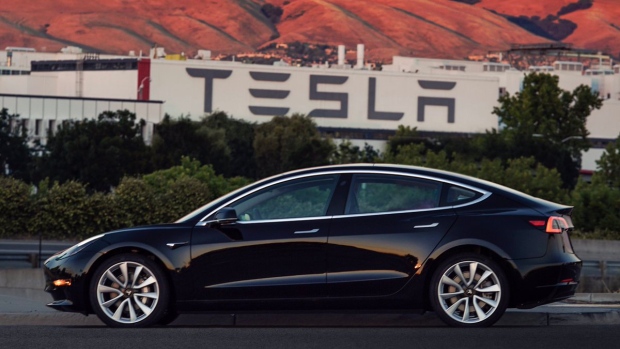Jul 21, 2017
Musk set to make Tesla history by launching Model 3 on time

Tesla (TSLA.O) Chief Executive Officer Elon Musk is aiming to do something he’s never done before: launch a car on schedule. The electric car company is set to hand over the keys to the first 30 Model 3 sedans on July 28 as its third mass-market offering, after blowing through self-imposed deadlines in getting the Model S sedan and Model X SUV on the road in their respective roll-outs in 2012 and 2015.
The new, smaller model will be a major test for the automaker, which has staked much of its future on the sedan’s success. Priced at US$35,000 (Canadian pricing has not yet been announced,) it’s about half the price of the flagship Model S and much more accessible to the buying public, who have placed $1,000 deposits for some 400,000 cars. That demand has created a massive backlog for the company, with some pre-orders not expected to be filled until 2019.
The success or failure of the Model 3 is paramount to Tesla’s future: Musk has publicly stated the company aims to sell half a million vehicles in total in 2018, more than five times its forecast for this year. Widespread adoption could also do wonders for Tesla’s bottom line, as the company has only turned in one profitable quarter since going public in 2010.
The Model 3’s relative simplicity is key for the company to eventually make money off the car. The model will initially launch with a paltry options list, which Musk described at Tesla’s annual shareholder meeting as “what color do you want and what size of wheels do you want,” a modern-day echo of Henry Ford’s maxim that Model T buyers could order their car in any colour they want, so long as it’s black.
The guts of the Model 3 will also be significantly simpler than that of the more expensive models, including a stripped-down interior. In place of a traditional instrument cluster, all information will flow through a centre-mounted touchscreen. Range will also be reduced compared to its more opulent siblings, with the Model 3 boasting an estimated range of 215 miles (345 km) on a single charge, about 20 per cent less than Model S owners see. The car will also launch as rear-wheel drive only, due to the lack of the same dual-motor set-up seen across the rest of the product line. The relative simplicity is further highlighted by the amount of wiring used in the Model 3’s construction. If laid out all the wiring would stretch to about 1.5 kilometres in length, about half the amount that goes into a Model S.
While customers seem enamoured by the prospect of picking up the baby Tesla, not all members of the analyst community are convinced Musk can deliver on his lofty goals. Cowen & Co. Senior Research Analyst Jeffrey Osborne told clients in a July 5 research note that he thinks Tesla will struggle to meet production goals as it increases reliance on automation to boost output.
“We anticipate a longer transition from building the vehicle by hand to fully automated robotics,” he wrote. “In addition, we are concerned about potential demand elasticity in 2018 as Tesla crosses 200,000 cumulative vehicles delivered and the $7,500 tax credit phases out.”
Osborne is the most bearish of the 24 analysts who cover the stock, with a rating equivalent to a “sell” and a US$155 target price on the stock, implying more than 50 per cent downside 12 months out.
Among the most significant issues for Tesla is meeting its battery production schedule. Issues in producing the larger, 100 kilowatt hour (kWh) battery pack for the Model S and X caused a delivery shortfall in the second quarter, though it should be noted the 60 kWh pack used in the Model 3 has not faced the same production challenges.
Exacerbating Musk’s challenges is the highly-competitive landscape at the $35,000 price point. The Model 3 will be going head-to-head with the best Germany has on offer, including the established BMW 3 Series, the Audi A4 and Mercedes C-class, none of which ship with the sparse interiors of the Tesla launch model. The issue on interior trim could be remedied by Tesla’s eventual roll-out of options for the vehicles, though Musk predicted would add on average between 20 and 30 per cent to list price, further pitting the Model 3 against luxury competition.






